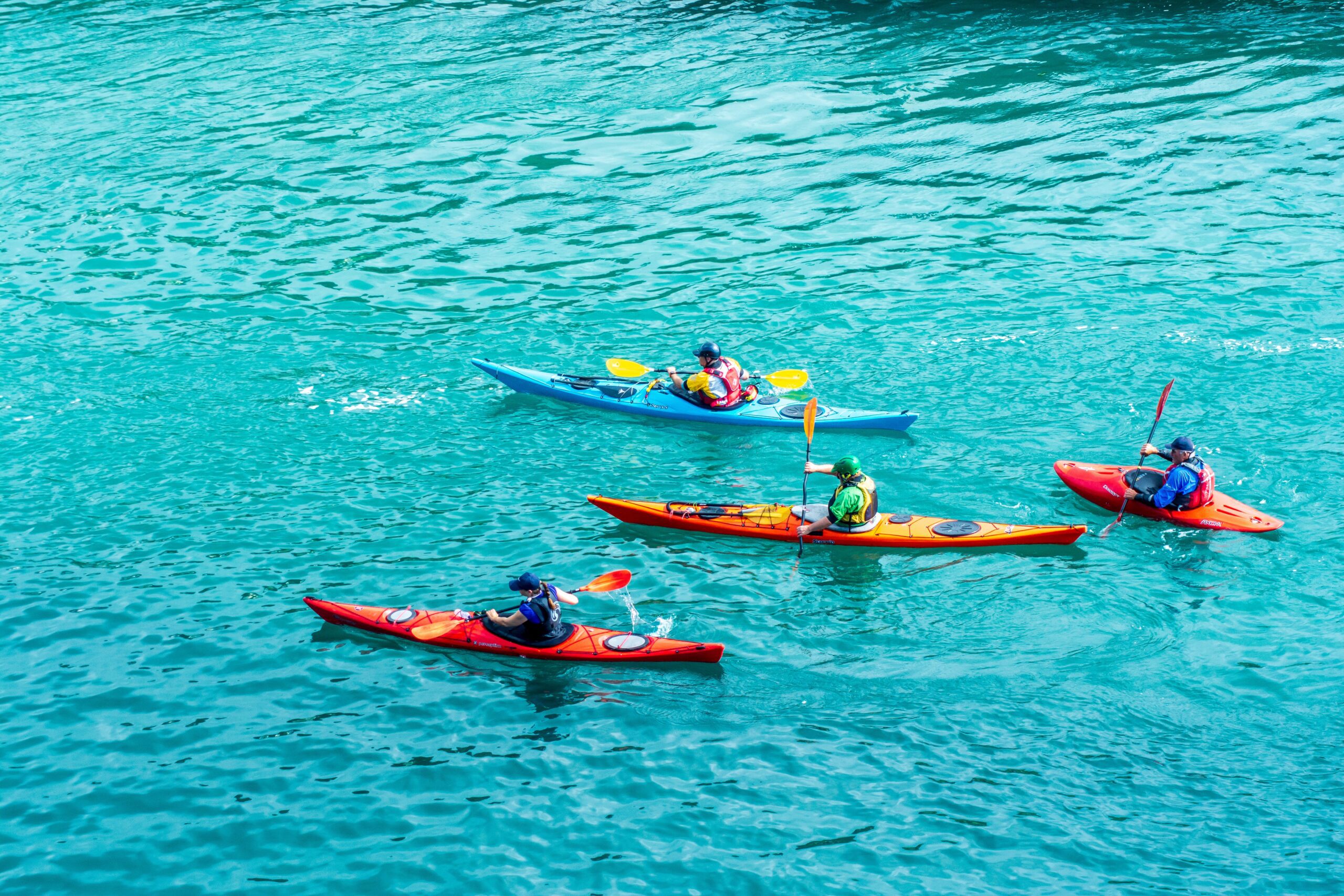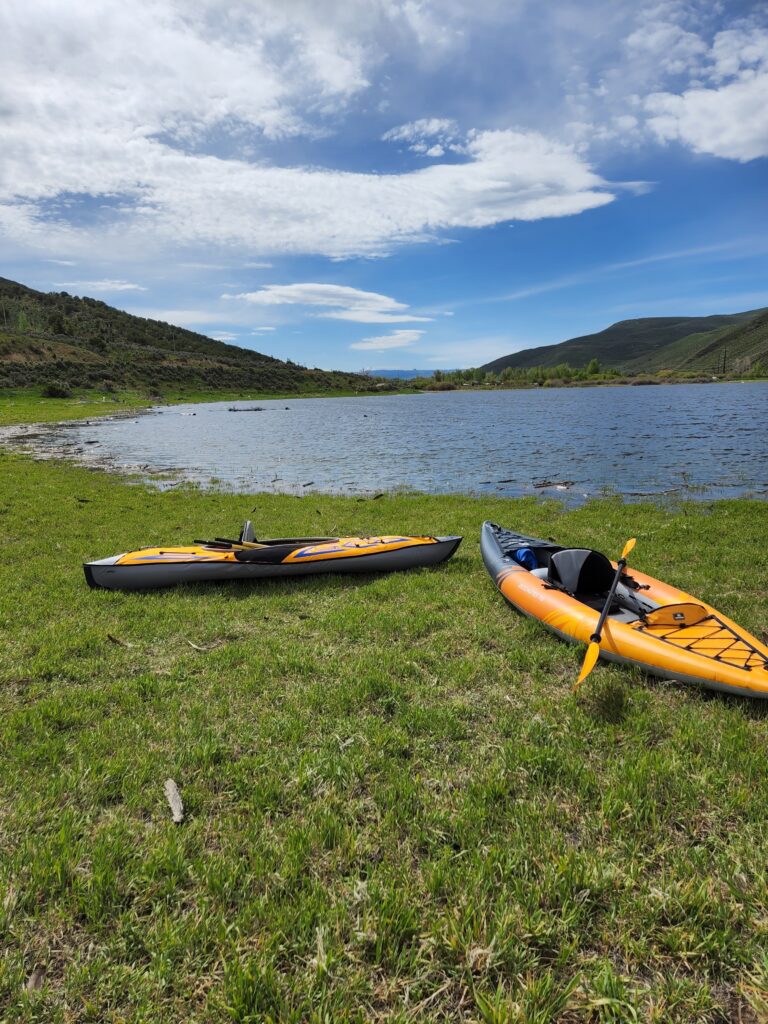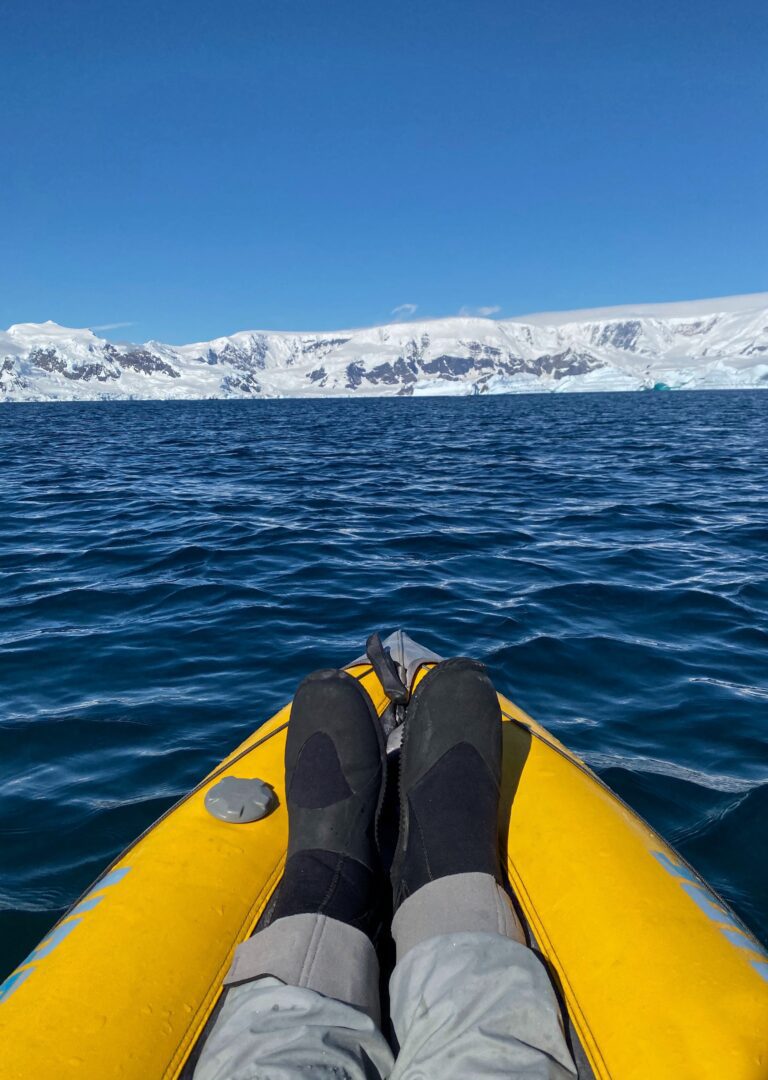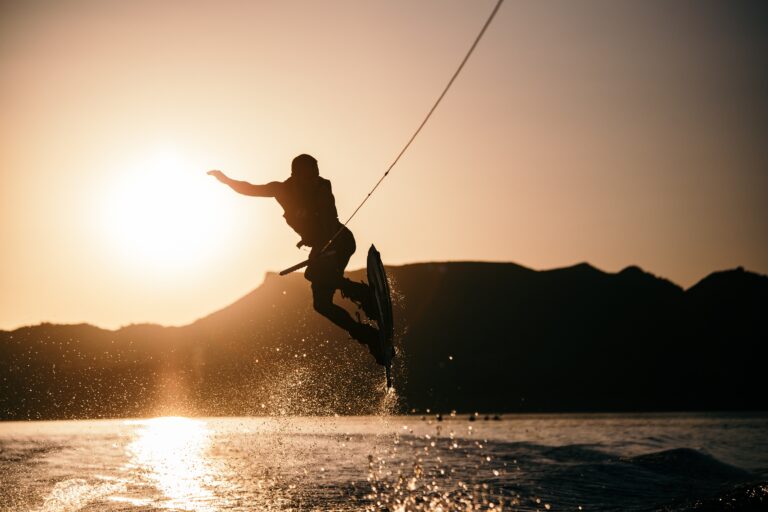Embarking on your first kayaking trip is an exhilarating experience filled with anticipation and excitement. As a beginner, it’s essential to understand what to expect and ensure you receive proper instruction to make the most of your adventure. In this beginner’s guide, we’ll walk you through the key elements to consider and emphasize the importance of receiving proper instruction when starting out. So, let’s dive in and discover what awaits you on your first kayaking trip!
Table of Contents
Getting Started with Proper Instruction
Before you set out on the water, it’s crucial to receive proper instruction to ensure your safety and enjoyment.
Finding a reputable instructor
To kickstart your kayaking journey, it’s essential to find a reputable instructor or kayak school in your area. Look for instructors who are certified by recognized organizations, such as British Canoeing, as they have undergone rigorous training, adhere to safety standards and are a great way to start Kayaking for beginners. Seek recommendations from fellow kayakers, check online reviews, or reach out to local paddling clubs for guidance.
Basic kayak orientation
Familiarize yourself with the various parts of a kayak to gain confidence and control. Learn about the cockpit, which is the seating area where you’ll sit, the hull, which is the bottom of the kayak that interacts with the water, and the footrests, which provide stability and allow you to brace your legs.
Paddle techniques
Proper paddling techniques are essential for efficient and effective manoeuvring on the water. Begin by learning the correct grip, where your hands are comfortably placed on the paddle shaft, and the paddle blades face the right direction. Explore different paddle strokes, including the forward stroke, reverse stroke, sweep stroke, and draw stroke. Understanding these fundamental strokes will help you navigate, turn, and stop your kayak with ease.
Safety guidelines
When participating in a water sport safety should always be the first priority. Kayaking is no different.. Before hitting the water, it’s crucial to understand essential safety guidelines. Wear a properly fitted personal flotation device (PFD) or life jacket at all times, ensuring it is approved by the appropriate authorities. Learn how to perform a self-rescue in case of capsizing and practice re-entering your kayak from the water. Familiarize yourself with basic rescue techniques and signalling methods, such as using a whistle or paddle to attract attention.
By receiving proper instruction in these key areas, you’ll gain the necessary skills and knowledge to navigate the waters with confidence. Remember that kayaking can be a physically demanding activity, so it’s important to listen to your body, take breaks when needed, and progress at your own pace. The guidance provided by a reputable instructor will set a strong foundation for your kayaking journey and ensure you start off on the right foot.
Understanding Water Conditions
A crucial aspect of kayaking is being aware of and adapting to water conditions. In this chapter, we’ll explore:
Calm waters
As a beginner, it’s best to start your kayaking adventures in calm waters such as lakes, ponds, or slow-moving rivers. These tranquil environments provide a gentle introduction to kayaking and allow you to focus on mastering your paddling techniques and building your confidence. Look for local water bodies that offer calm conditions, minimal boat traffic, and easy access points for launching your kayak.
Wind and currents
Wind and water currents can significantly impact your kayaking experience, so it’s essential to understand their effects and how to navigate them. Before heading out, check weather forecasts and wind conditions. If you encounter windy conditions, try to paddle into the wind first when you have more energy and return with the wind at your back. Additionally, be mindful of currents, especially in rivers and coastal areas. Learn to read the water and navigate around eddies, which are circular currents that can affect your kayak’s movement.
Tides and waves
If you’re planning to venture into coastal areas, understanding tides and waves becomes crucial. Tides are the rise and fall of water caused by the gravitational pull of the moon and the sun. Familiarize yourself with tidal charts to plan your kayaking trips accordingly. Paddle during the incoming or outgoing tide when the water is moving but not at its peak. Waves can be present in coastal areas due to wind or boat activity. Start with smaller waves and gradually progress to larger ones as you gain experience and confidence. Practice proper bracing techniques to maintain stability in waves and always keep a safe distance from breaking waves.
By understanding water conditions and adapting your kayaking plans accordingly, you’ll ensure a safer and more enjoyable experience on the water. Start with calm waters to build your skills, pay attention to wind and currents, and be aware of tidal patterns and wave activity in coastal areas. Remember to always prioritize your safety and stay within your comfort zone. As you gain experience, you can gradually explore more challenging water conditions and expand your kayaking horizons.
Exploring Nature and Wildlife
Kayaking provides an incredible opportunity to connect with nature and encounter fascinating wildlife.
Choosing the right location
When planning your kayaking trip, consider selecting locations known for their natural beauty and wildlife sightings. Research local lakes, rivers, or coastal areas that are rich in biodiversity and offer a chance to observe wildlife up close. National parks, wildlife reserves, and protected areas often provide ideal kayaking environments with diverse ecosystems.
Wildlife encounters
While kayaking, you’ll have the privilege of observing wildlife in their natural habitats. Respect the wildlife by keeping a safe distance and avoiding any disruptive behaviour. Use binoculars or a camera with a telephoto lens to observe animals from afar without disturbing them. Take the time to learn about the wildlife species in the area, such as birds, turtles, fish, or even marine mammals like seals or dolphins. Appreciate their beauty and observe their behaviours while maintaining a minimal impact on their environment.
Environmental conservation
As kayakers, we have a responsibility to protect the natural environments we explore. Practice “Leave No Trace” principles, which include disposing of waste properly, avoiding damaging vegetation, and refraining from disturbing wildlife or their habitats. Be mindful of sensitive areas, such as nesting sites or fragile ecosystems, and paddle responsibly to minimize your impact. Consider participating in local clean-up efforts or joining conservation organizations to contribute to the preservation of these natural spaces for future generations.
Remember, the primary goal of encountering wildlife while kayaking is to observe and appreciate them without causing harm or disruption. Enjoy the serenity of nature, listen to the sounds of birds chirping, and immerse yourself in the peaceful surroundings. By practicing responsible kayaking and environmental stewardship, you can contribute to the preservation of these precious habitats and ensure that future generations can also experience the wonder of encountering wildlife in their natural habitats.
Essential Gear and Equipment
To ensure a comfortable and safe kayaking experience, it’s crucial to have the right gear.
Kayak selection
As a beginner, choosing the right kayak is essential. Opt for a kayak type that matches your intended paddling environment and skill level. Recreational kayaks are popular among beginners, as they offer stability, manoeuvrability, and ease of use. Sit-on-top kayaks are another great option, as they provide an open cockpit and are more forgiving if you capsize. Consider the kayak’s size, weight, and storage capacity based on your needs and preferences.
Personal flotation devices (PFDs)
Wearing a properly fitted personal flotation device, commonly known as a life jacket, is non-negotiable for kayakers of all skill levels. Look for a PFD that is approved by relevant authorities and designed specifically for paddling activities. Check out our guide to Life Jackets here. Ensure it has adjustable straps, a secure closure system, and adequate buoyancy to keep you afloat in case of an emergency. Comfort and freedom of movement are key factors when selecting a PFD.
Clothing and accessories
Dressing appropriately for kayaking will enhance your comfort and protect you from the elements. Opt for lightweight, quick-drying clothing that offers sun protection, such as a long-sleeved shirt and pants made of moisture-wicking material. Wearing a wide-brimmed hat and polarized sunglasses will shield you from the sun’s glare. Don’t forget to apply sunscreen to exposed areas, even on cloudy days. Consider investing in neoprene water shoes or sandals with a good grip to protect your feet and provide traction on slippery surfaces. A dry bag or waterproof pouch will keep your personal items, such as your phone, keys, and snacks, dry and secure during your kayaking trips.
By ensuring you have the right gear and equipment, you’ll not only feel prepared but also enhance your overall kayaking experience. Choose a kayak that suits your needs and skill level, always wear a properly fitted PFD, and dress appropriately for the weather and water conditions. Investing in high-quality gear will not only contribute to your safety but also provide comfort and ease as you paddle through the waters.
Making Memories on Your First Trip
To make your first kayaking trip truly memorable, here are some additional tips and suggestions:
Planning and logistics
Before setting out on your kayaking adventure, take the time to plan and prepare. Research the area you’ll be kayaking in, including any rules or regulations specific to that location. Check the weather forecast and be aware of any potential hazards or restrictions. Plan your route and consider the duration of your trip, factoring in rest breaks and allowing for extra time to explore points of interest along the way. Share your itinerary with a trusted friend or family member for safety purposes.
Packing essentials
Create a checklist of items you’ll need for your kayaking trip. Pack sufficient water and snacks to keep you hydrated and energized throughout the day. Bring a waterproof bag or container to store your essentials, including a first-aid kit, sunscreen, insect repellent, and a map or navigation tools. It’s also a good idea to have a repair kit for any minor equipment issues that may arise.
Enjoying the experience
Embrace the tranquillity of nature as you embark on your kayaking journey. Take moments to pause and appreciate the beauty around you. Listen to the sounds of the water, birds chirping, or leaves rustling in the wind. Capture memories by bringing a waterproof camera or using a waterproof case for your smartphone. However, remember to balance capturing moments with being fully present and immersing yourself in the experience.
Safety reminders
Even with proper preparation, it’s important to prioritize safety during your kayaking trip. Always wear your PFD and ensure it is securely fastened. Stay aware of your surroundings, including other boaters, obstacles, or changing weather conditions. Avoid risky behaviour such as standing up or leaning too far over the edge of the kayak. Stay within your comfort zone and don’t hesitate to ask for help or guidance if needed.
Reflecting on your experience
After your kayaking trip, take the time to reflect on the memories you’ve created and the skills you’ve learned. Consider writing in a journal or sharing your experience with others. Reflecting on your journey can help solidify your newfound passion for kayaking and inspire future adventures.
By following these tips and suggestions, you’ll be well-prepared to make lasting memories on your first kayaking trip. Through careful planning, packing the essentials, embracing the experience, prioritizing safety, and reflecting on your journey, you’ll create a positive and memorable adventure that will ignite your passion for kayaking.
Summary
Embarking on your first kayaking trip is an exciting adventure that can open the door to a lifelong passion for the sport. By prioritizing proper instruction and understanding what to expect, you’re setting yourself up for a safe and enjoyable experience. Remember to find a reputable instructor, be mindful of water conditions, and immerse yourself in the beauty of nature. As you paddle through serene waters and encounter awe-inspiring wildlife, you’ll discover the true magic of kayaking. So, embrace the journey, savor every moment, and let your first kayaking trip be the beginning of a remarkable adventure.
Happy kayaking!




